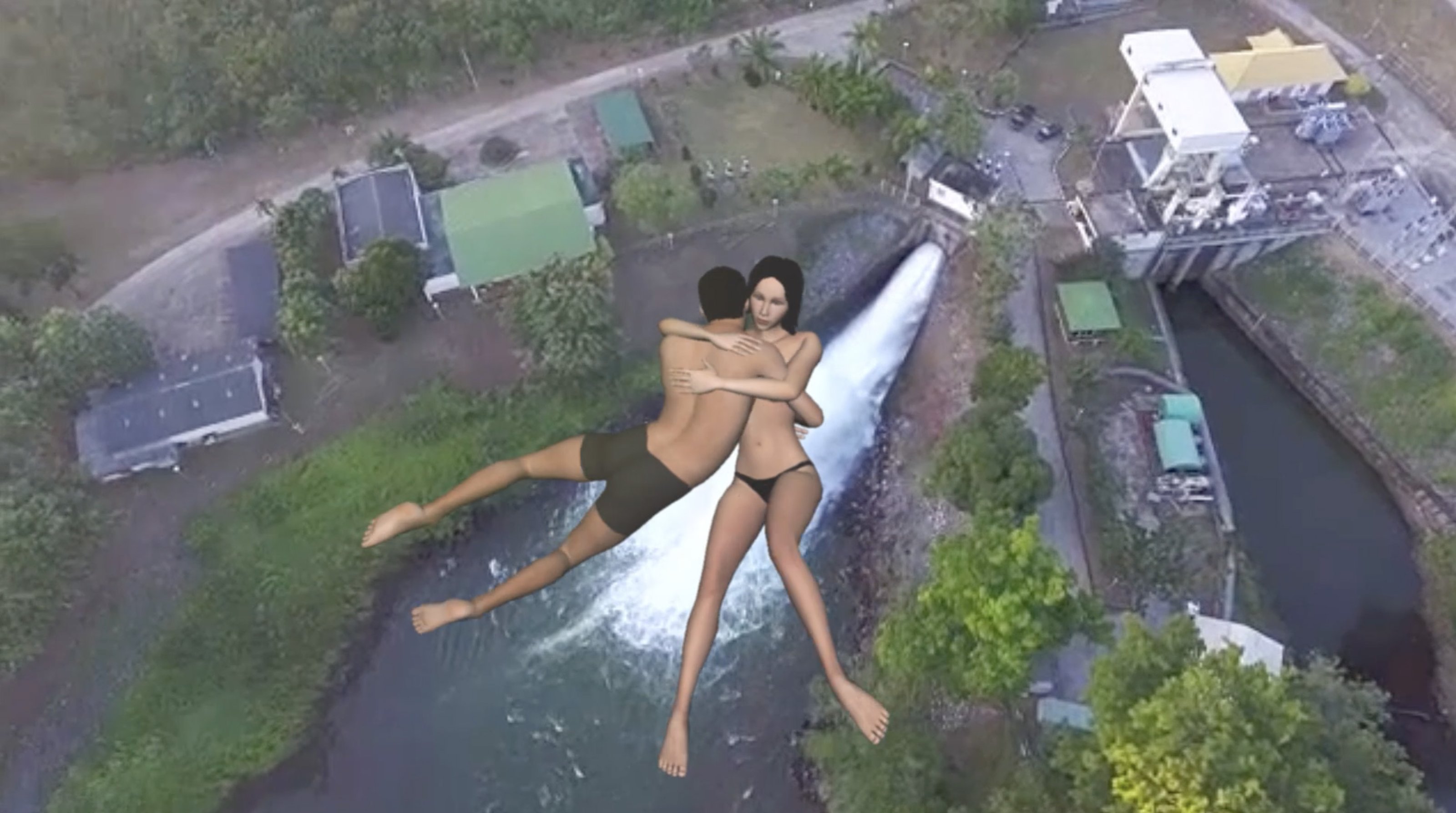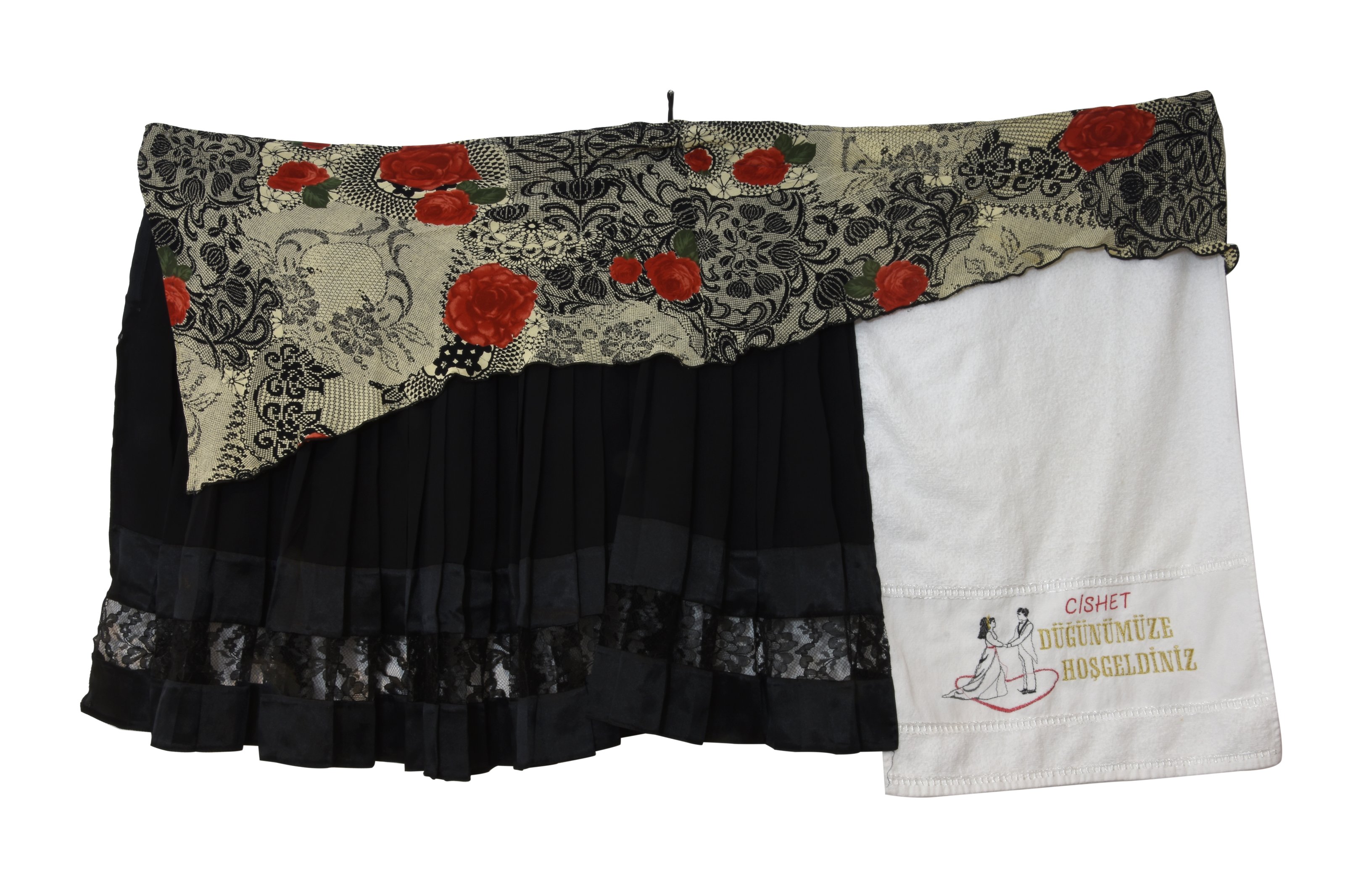Mükerrem Tuncay is an artist based in Lyon whose practice is deeply integrated with a long-term confrontation with the oppressive structures of an elite playground that often fails to remunerate artists fairly. Legal codes, social conventions, and lack of infrastructure for artworkers define and enforce unfair conditions that often leave artists exposed to exploitation and unfair working conditions. Tuncay’s performances, texts, activism and artworks actively propose solutions to a more equitable future in which true solidarity among cultural workers can address the disparities experienced by vulnerable communities.
Àngels Miralda: Dear Mükerrem, your practice confronts the persistent structures of inequality in the art world through humorous takes that often use social media as a platform to express views shared by large portions of the cultural community. Can you briefly introduce how social structures for art in France create an unequal playing field? How does your background as a migrant, working-class, non-Western artist affect your career possibilities despite the contemporary discourse around inclusion and diversity?
Mükerrem Tuncay: I think humour helps bridge the contradictions I come across — situations I try to grow through. For example, imagine wanting to speak about your experience as a migrant in your art, and at the same time stumbling upon open calls for public commissions to produce work for a future detention centre for immigrants. What does one do in a moment like that?
These contradictions carry a mental weight. As migrants, we often juggle conflicting realities. And if we’re not careful, our work can unintentionally shift from a tool for liberation into a product of artistic capitalisation.
This tension isn’t just emotional or ethical — it’s structural. And it’s not something limited to France. Being a migrant and being an artist are both socially precarious positions, and in my case, they’re deeply interconnected. For instance, if I’m no longer employed or commissioned by the cultural sector, the consequences are immediate — including the risk of not being able to renew my residence permit.
Our structural vulnerability also shapes how cultural workers engage with us. Risk management in this context often means being invited only to group exhibitions where your portfolio is carefully reviewed, and only works that don’t challenge the dominant gaze — or that are palatable to the broader public — are selected. This allows everyone to include you without risking their annual state or private funding.
Studio view outside
Studio view inside
Studio view ©Adagp, Paris, 2025
Studio view ©Adagp, Paris, 2025
ÀM: I admire your direct confrontations with topics that are still completely taboo in contemporary art. One of your works that caught my attention is a ceramic piece titled Rape Apologist. The hand-crafted aesthetic and soft pink glaze dripped with white “stains” is immediately visceral and jarring when you see what this work is about. A hammer of justice slams down on a downturned tongue-like pad and reveals its end in the shape of a phallus. This work then transforms into something filthy and visceral representing the patriarchal legal system. France has recently been the center of the latest feminist icon to emerge - Gisèle Pelicot - how has the mood changed since then and do you think this will lead to any changes in the law? Is the artistic community in France any better at treating cases of gender-based violence than society at large?
MT: Thank you! Actually, yes, there have been important advancements. French law currently defines rape as any act of sexual penetration committed through “violence, coercion, threat, or surprise,” but it does not explicitly mention the absence of consent. However, following the Gisèle Pelicot case, a new proposal aims to redefine rape as “any sexual act performed without voluntary consent.” This updated definition emphasises that consent must be given freely, can be withdrawn at any time, and cannot be assumed from silence or a lack of resistance.
Besides being successful, Gisèle Pelicot’s case has helped improve the situation for sexual assault victims and survivors seeking justice through administrative recognition and validation. In my work Rape Apologist, I try to visualise the justice system’s role in this violence — as a continuum — through its administrative mechanisms, because there are many blind spots in the system. As a survivor who has personally experienced the ineffectiveness of the legal system, my case could not even go to court because the statute of limitations had expired. Sometimes, the moment we come out of post traumatic amnesia and the legal timeline for filing a complaint simply don’t match. Faced with this immense sadness, I didn’t know what to do other than make art to call it out.
When it comes to how we treat these events in the artistic community, I don’t think we are any better. A recent pedocriminality case involving a well-known artist surfaced after forty years of abuse and impunity. Apparently, many in the community were aware, yet chose to uphold a code of silence. Which means — and let’s be honest — everyone who maintained an active career around this artist over those forty years was, in some way, complicit in this crime. The affair speaks for itself.
Behind-the-scenes photo of the filming of Chasing the Flame. ©Adagp, Paris, 2025
Behind-the-scenes photo of the filming of Chasing the Flame. ©Adagp, Paris, 2025
Behind-the-scenes photo of the filming of Chasing the Flame (interviews) ©Adagp, Paris, 2025
Behind-the-scenes photo of the filming of Chasing the Flame (interviews) ©Adagp, Paris, 2025
ÀM: It’s so horrible how many people in the artworld have had these types of experiences and the hypocrisy of a system that presents itself as progressive but is filled with structural and systematic tools to silence survivors. While not as obvious forms of abuse, there are also omniscient interpersonal violences that never seem to find accountability in the cultural system, this appears in the concept of your film Ghosting (2020). This verb has come to describe a person who disappears like a phantom when they decide they no longer want to be in a certain kind of relationship and is common in the world of dating apps, but this can also extend into the realm of friendships or even professional connections. The silent treatment is considered a passive-aggressive form of emotional abuse and cruelty, and yet it is pervasive and normalised. Do you see this interpersonal disposability as a symptom of late-stage capitalist alienation?
MT: Exactly! I see it as a tool for the liberalisation of bodies. In the video, I was interested in presenting a glimpse of ghosting within an intimate relationship. For me, having a hidden agenda in intimacy — and siphoning from it rather than exchanging or harvesting with respect for the source — falls under the logic of capitalism.
I believe patterns of emotional withdrawal and disposability have long reflected the logic of imperial and capitalist power; recent linguistic inventions are simply helping us better name and recognise these dynamics. When examined through the lenses of race, class, and gender, these behaviours reveal themselves not merely as personal choices, but as techniques of psychological warfare that disproportionately serve those in positions of power.
We’ve all heard of employers ghosting workers they owe payment to — but how often do we hear of a worker ghosting an employer? When ghosting is enacted by someone with less power, it can represent an act of disengagement — and sometimes, it’s the most cordial way to end a situation, even though the material repercussions are likely to be far more severe. What interests me most is the emotional landscape these behaviours produce.

Still image: Mükerrem Tuncay / Ghosting, 2020 Video, Hd, 1:33 min ©Adagp, Paris 2025
ÀM: Can you explain a little about your most recent series of works? You have been working on textile collages that reference intimate garments, family and gender roles since 2021 with the piece Welcome to our Cisgender, Heterosexual Wedding (2021) which uses the signature humoristic irony present in many of your works. This series has developed a lot, can you explain the references behind “The leech confuses, that's why it needs to act” (2025) and where this series is going?
MT: This textile research lies in textile assemblage, a process I approach as a form of storytelling. These works serve, for me, as tools for emotional processing — emerging from emotional flashbacks, dreams, or events that have triggered something I can’t quite make sense of. The textile pieces hold a memory, an emotional charge that, once recomposed and embroidered, becomes a support for meditation on transformation and the persistence of traces. I revisited the works of Joseph Cornell a lot while doing this series.
“The leech confuses — that’s why it has to act. Then you confront; there it lays an egg” is one of the haiku I wrote, influenced by everyday events. First, I choose haiku that I want to develop visually; afterwards, I let the textile material guide me. Some materials are open to collaboration, and some resist. I often feel like a community manager or operator — trying to understand the needs of each element in order to create a shared synergy, while still sitting with the difficult emotion that prompted the piece.
Honestly, I really like how textile is used for cultural transmission. I really want to learn about weaving. I think I deeply connect with processes that carry memory through labor — something slow, embodied, and rooted in tradition, yet open to reinterpretation.

Mükerrem Tuncay / Cishet dügünümüze hosgeldiniz, 2021 Fabric, digital and manual embroidery Mixed media, 140 x 70 x 5 cm ©Adagp, Paris 2025
ÀM: You deal a lot with the structural inequalities of the art world through your personal experiences and inter-personal relations. What do you make of art’s claim to radical imagination once we confront the reality that the structure of the art world is more unequal, more unfair, and more exploitative than other industries? How can art make meaningful change in the world when it seems subsumed by its own subservience to power?
MT: Art is anticapitalist and radical by nature because it demands us to slow down, connect with our emotions, observe, and relate. Art doesn’t require emotional withdrawal. This inequality, unfairness, and explosiveness in the art world has an origin — and I believe art needs to help the artists before helping the public.
Artists have been misrepresented and stereotyped for centuries, and we didn’t have the economic, social, or political capital to withstand the consequences of these misrepresentations — and it has cost us dearly. It is essential to access these capitals in order to redefine our profession. But which parts are even up for negotiation when artists are dehumanised and the labor behind the artwork is already invisibilized?
Now, many of us want to be identified as artworkers, in order to challenge the status quo. I think we may learn how to help the world by learning how to help ourselves. These two can happen at the same time, and even intertwine.
ÀM: You’re on calls. What can you offer in terms of consults to other artists, collectors, or people interested in creating a more equal and equitable art world?
MT: Besides studio visits, people can consult me for short term projects where ideas and actions come together.
End.